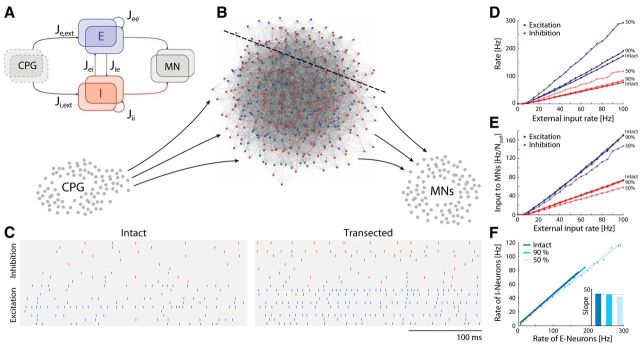Figure 7.
The model network remains balanced after structural division. A, Schematic of the architecture of the local network. Input is provided by an external population of excitatory neurons (CPG), which connects to both the excitatory (blue boxes) and inhibitory (red boxes) populations. Subsets of these populations project to each other resulting in recurrent inhibition and excitation. Other subsets of E/I project to motoneurons (MN; right gray box). B, Detailed schematic of a miniature premotor network consisting of inhibitory (red; Ninh = 100) and excitatory (blue; Nexc = 100) neurons. A subset of the population receives excitatory inputs from the external source (CPG; left gray cells), and another subset projects to local motoneurons (bottom right gray cells). A transection line is indicated with a dashed line. C, Rastergram of 10 sample neurons of both E and I populations before and after transection (50%). D, The mean spike rates of E (blue) and I (red) for the intact, 10 and 50% transected network as a function of external drive. E, The E (blue) and I (red) spike rate input to a sample motoneuron normalized by the total number of output projections (Nout,I and Nout,E) as a function of external input to the premotor network for intact, 10% and 50% transected network. F, The mean rates of E versus I neurons for intact and transected premotor network, and their slopes have marginal change after transection (inset).

